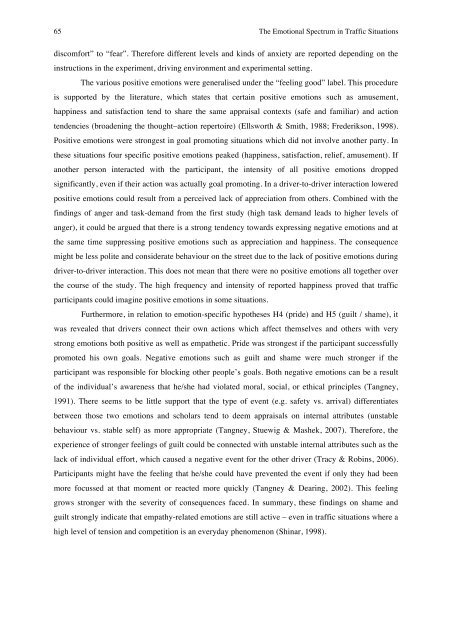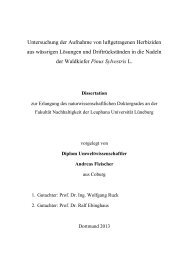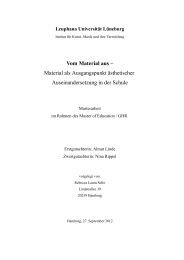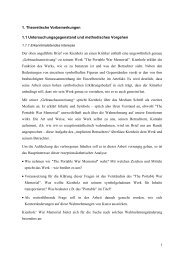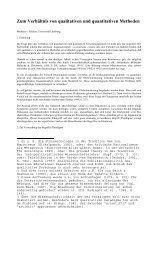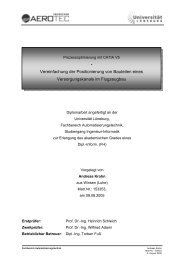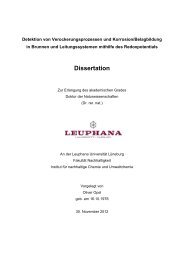Determinants of Emotional Experiences in Traffic Situations ... - OPUS
Determinants of Emotional Experiences in Traffic Situations ... - OPUS
Determinants of Emotional Experiences in Traffic Situations ... - OPUS
Create successful ePaper yourself
Turn your PDF publications into a flip-book with our unique Google optimized e-Paper software.
65 The <strong>Emotional</strong> Spectrum <strong>in</strong> <strong>Traffic</strong> <strong>Situations</strong><br />
discomfort” to “fear”. Therefore different levels and k<strong>in</strong>ds <strong>of</strong> anxiety are reported depend<strong>in</strong>g on the<br />
<strong>in</strong>structions <strong>in</strong> the experiment, driv<strong>in</strong>g environment and experimental sett<strong>in</strong>g.<br />
The various positive emotions were generalised under the “feel<strong>in</strong>g good” label. This procedure<br />
is supported by the literature, which states that certa<strong>in</strong> positive emotions such as amusement,<br />
happ<strong>in</strong>ess and satisfaction tend to share the same appraisal contexts (safe and familiar) and action<br />
tendencies (broaden<strong>in</strong>g the thought–action repertoire) (Ellsworth & Smith, 1988; Frederikson, 1998).<br />
Positive emotions were strongest <strong>in</strong> goal promot<strong>in</strong>g situations which did not <strong>in</strong>volve another party. In<br />
these situations four specific positive emotions peaked (happ<strong>in</strong>ess, satisfaction, relief, amusement). If<br />
another person <strong>in</strong>teracted with the participant, the <strong>in</strong>tensity <strong>of</strong> all positive emotions dropped<br />
significantly, even if their action was actually goal promot<strong>in</strong>g. In a driver-to-driver <strong>in</strong>teraction lowered<br />
positive emotions could result from a perceived lack <strong>of</strong> appreciation from others. Comb<strong>in</strong>ed with the<br />
f<strong>in</strong>d<strong>in</strong>gs <strong>of</strong> anger and task-demand from the first study (high task demand leads to higher levels <strong>of</strong><br />
anger), it could be argued that there is a strong tendency towards express<strong>in</strong>g negative emotions and at<br />
the same time suppress<strong>in</strong>g positive emotions such as appreciation and happ<strong>in</strong>ess. The consequence<br />
might be less polite and considerate behaviour on the street due to the lack <strong>of</strong> positive emotions dur<strong>in</strong>g<br />
driver-to-driver <strong>in</strong>teraction. This does not mean that there were no positive emotions all together over<br />
the course <strong>of</strong> the study. The high frequency and <strong>in</strong>tensity <strong>of</strong> reported happ<strong>in</strong>ess proved that traffic<br />
participants could imag<strong>in</strong>e positive emotions <strong>in</strong> some situations.<br />
Furthermore, <strong>in</strong> relation to emotion-specific hypotheses H4 (pride) and H5 (guilt / shame), it<br />
was revealed that drivers connect their own actions which affect themselves and others with very<br />
strong emotions both positive as well as empathetic. Pride was strongest if the participant successfully<br />
promoted his own goals. Negative emotions such as guilt and shame were much stronger if the<br />
participant was responsible for block<strong>in</strong>g other people’s goals. Both negative emotions can be a result<br />
<strong>of</strong> the <strong>in</strong>dividual’s awareness that he/she had violated moral, social, or ethical pr<strong>in</strong>ciples (Tangney,<br />
1991). There seems to be little support that the type <strong>of</strong> event (e.g. safety vs. arrival) differentiates<br />
between those two emotions and scholars tend to deem appraisals on <strong>in</strong>ternal attributes (unstable<br />
behaviour vs. stable self) as more appropriate (Tangney, Stuewig & Mashek, 2007). Therefore, the<br />
experience <strong>of</strong> stronger feel<strong>in</strong>gs <strong>of</strong> guilt could be connected with unstable <strong>in</strong>ternal attributes such as the<br />
lack <strong>of</strong> <strong>in</strong>dividual effort, which caused a negative event for the other driver (Tracy & Rob<strong>in</strong>s, 2006).<br />
Participants might have the feel<strong>in</strong>g that he/she could have prevented the event if only they had been<br />
more focussed at that moment or reacted more quickly (Tangney & Dear<strong>in</strong>g, 2002). This feel<strong>in</strong>g<br />
grows stronger with the severity <strong>of</strong> consequences faced. In summary, these f<strong>in</strong>d<strong>in</strong>gs on shame and<br />
guilt strongly <strong>in</strong>dicate that empathy-related emotions are still active – even <strong>in</strong> traffic situations where a<br />
high level <strong>of</strong> tension and competition is an everyday phenomenon (Sh<strong>in</strong>ar, 1998).<br />
!


